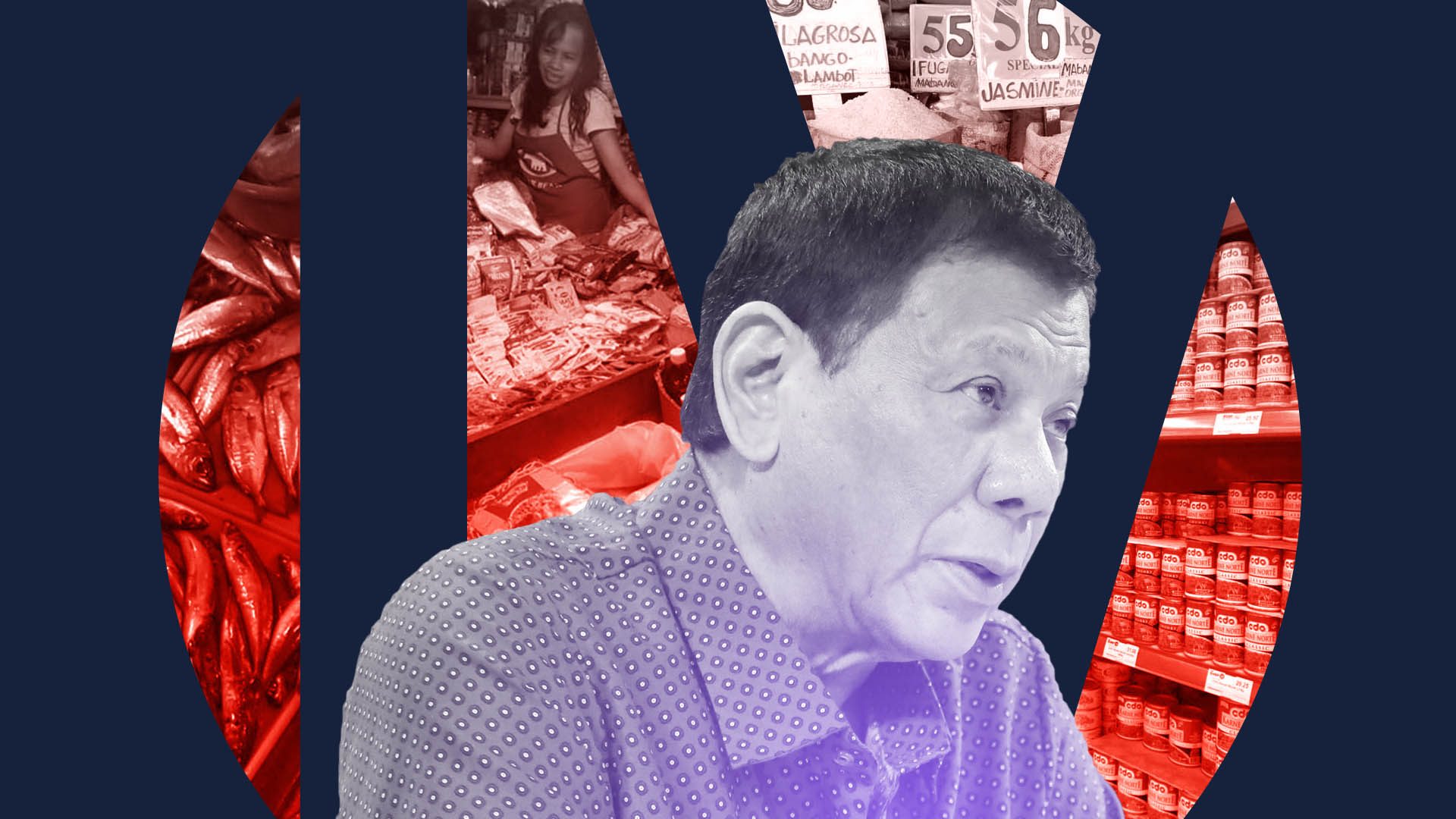SUMMARY
This is AI generated summarization, which may have errors. For context, always refer to the full article.

MANILA, Philippines – During President Rodrigo Duterte’s 4th year in office, the monthly inflation rate in the country stayed below 3%. Despite the coronavirus pandemic, the government reported an inflation rate of 2.1% in May 2020.
Months earlier, it even dipped to 0.8% in October 2019, the lowest in over 3 years.
Compare that to Duterte’s 3rd year, when inflation went up to 6.7% in September 2018, which was the highest in more than 9 years.
What happened? The low inflation in 2019 was partly the result of the “base effect” following the rice crisis that contributed to high inflation rates in 2018, explained Jose Ramon Albert, a senior research fellow of the Philippine Institute for Development Studies.
In an email interview, he said, “With government addressing issues of supply of rice squarely, you would really expect inflation to have tapered off.”
The base effect is a technical “distortion” in monthly inflation figures “from a sudden spike or decline in them during a short period of time,” according to Investopedia.com.
Albert then cited information from the Philippine Statistics Authority to explain that the low 0.8% inflation rate in October 2019 “was largely due to the prices of food and non-alcoholic beverages, as well as the prices of transport, housing, water, electricity, gas and other fuels that also pulled inflation to their levels.”
But economist JC Punongbayan noted in another email interview that the low inflation rate “doesn’t mean that prices have also gone down.” It only means that the rate of increase in the prices of goods slowed down.
“In fact, if you look at the consumer price index, it’s higher than ever. Inflation is low only because prices have plateaued at higher levels, after they skyrocketed in 2018 owing to a combination of higher world oil prices and new excise taxes stipulated by the 2017 TRAIN (Tax Reform for Acceleration and Inclusion) law,” he said.
He also attributed the low inflation rates in 2019 mainly to the base effect. (READ: [ANALYSIS] Why free-falling inflation is not all good)
Inflation and the pandemic
Then the COVID-19 outbreak upended both supply and demand, said both experts.
The sudden reduction of economic activities due to the lockdown resulted in “demand disappearing, as consumers focus on purchase of basic commodities,” Albert said. In addition, “not every job can be performed at home in services or industry, so this is why we not only had reduced economic performance, but effectively a supply destruction.”
Albert noted that the low inflation rates may have been an instance of “disinflation” or a decline in the rate of inflation, in the short term. “Prices would still move up as they historically do, but they would do so at a lower rate. This would result in inflation being at the government’s inflation targets, possibly even below the targets, but not into negative territory.”
If we look at the inflation rate for each commodity, many have largely remained steady in 2020 so far, except for a steep drop in transport, and a decline in housing and utilities like water and gas.
Meanwhile, because Filipinos haven’t been able to go out and buy items during the pandemic, this led to “a dampening of price levels and, hence, the inflation rate,” said Punongbayan.
Zeroing in on food items, the inflation rate for vegetables, fruits, and other miscellaneous products went down in May compared to April. The inflation rate for fish has been gradually going down since March.
Meanwhile, rice prices have been rising, most likely due to the base effect as well, said Punongbayan.
Both Albert and Punongbayan also explained that the prices of medical supplies like rubbing alcohol and personal protective equipment shot up at the start of the pandemic – as well as during the Taal Volcano eruption in January. In the case of face masks, prices rose because of overwhelming demand and limited supply. But since then, supply has stabilized.
With the coronavirus crisis still not over, Albert said the situation of consumer prices moving forward is “uncharted territory,” while Punongbayan predicted consumption growth and inflation “would remain muted.”
“The future is very much path-dependent upon how this pandemic evolves, and how government manages the problem, both of which carry a lot of uncertainties that are difficult to put into a crystal ball,” said Albert.
Punongbayan stressed that supply chains of other products, such as food, “must not be disrupted in the coming weeks and months. Otherwise, we might see their prices spike as well.” – Rappler.com
Add a comment
How does this make you feel?





There are no comments yet. Add your comment to start the conversation.